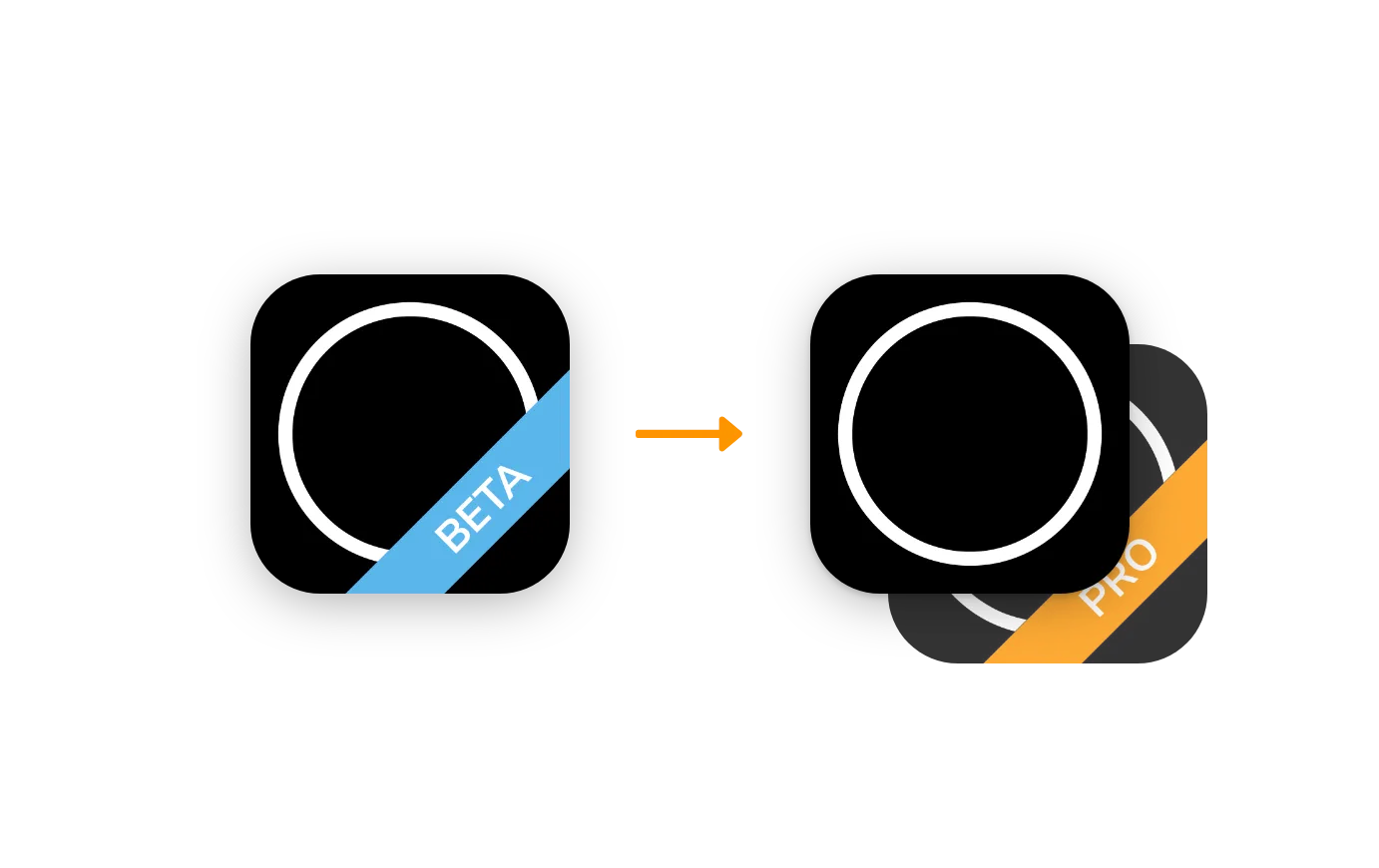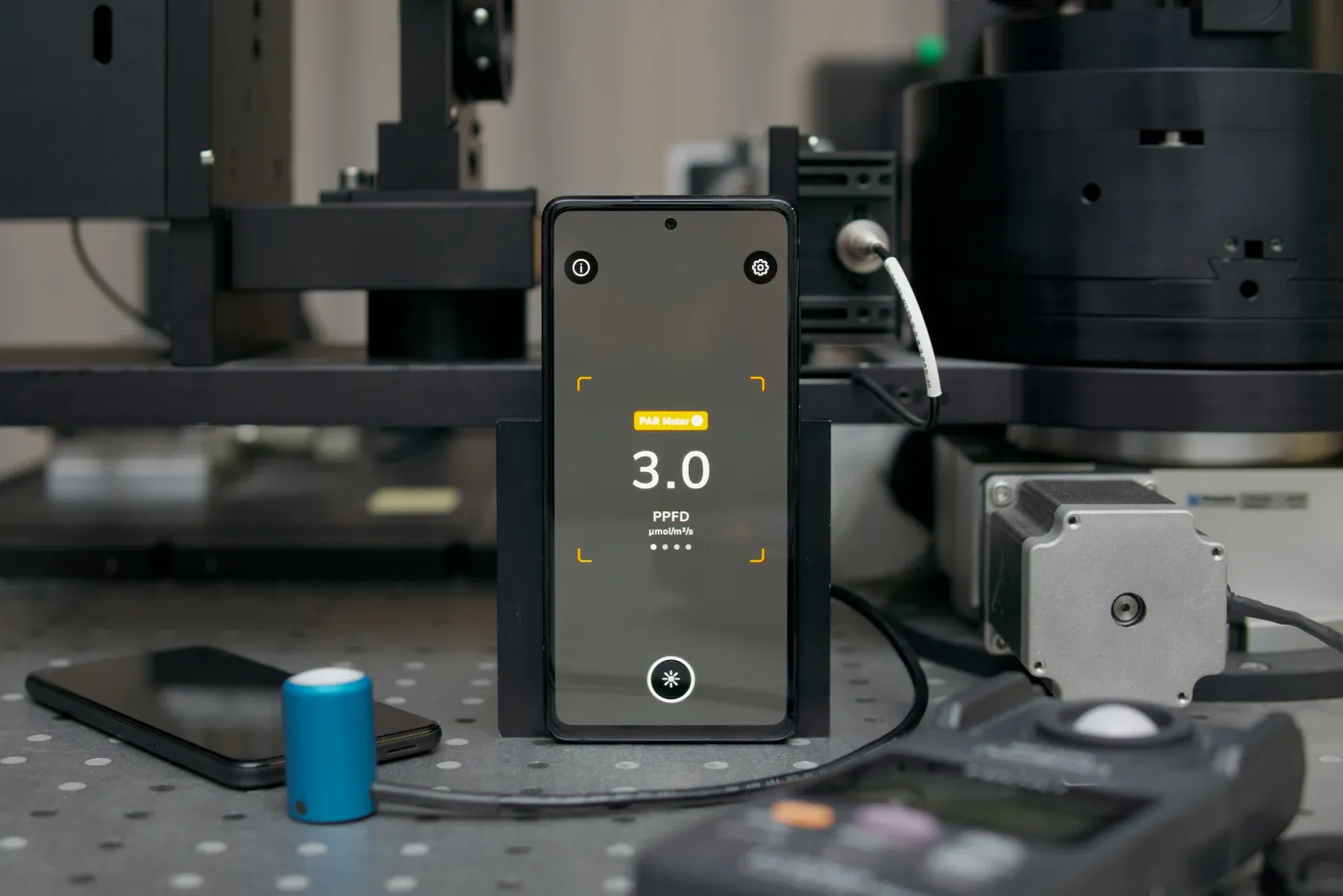
Auto-Translate
After nine months of intense, dedicated and sometimes painful research and development, we've finally been able to release Korona 2.0 that is now named Photone.
The Challenge
Our goal has always been to replace a dedicated $500 PAR meter with a device we've always got with us: Our smartphone. This indeed is a massive challenge: Instead of dealing with well known, controllable and purpose built hardware, we are using off-the shelf consumer technology with no influence over the built-in light capturing technology (a.k.a. camera). Additionally, there are so many different smartphones out in the world, and we wanted to find a way to support all of them.
Apple's iPhones have always been known for their remarkably good cameras and accompanying image quality. However, the captured images require a lot of internal image signal processing magic to make the images look the way they do. What this means for our purpose is basically a giant black box we do not have direct control over.
The Result
Our new algorithm enables to measure as accurate as a few percent within the range of a $500 PAR meter and a best-in-class lux meter.
This article briefly describes and summarizes the way we got there. Happy reading!
Preparation is Key
We needed to create reproducible conditions covering the most important — and most tricky — scenarios our users are confronted with. Therefore, we bought a lot of iPhones, a lot of lights, and best-in-class light meters.
Devices
We support the whole iPhone range all the way up from the 5S to the 11 Pro Max. Additionally, we added iPad as well which then resulted in quite a long list of phones and tablets we needed to test, measure, and calibrate.

Reference Meters
To gain accurate PAR measurements, we use an Apogee SQ-520 PAR meter coming in at $500. For the illuminance (lux / fc) counterpart we mainly used a PeakTech 5086 Class A light meter with a ticket price of $120. We did not make any compromise on the reference meters we used and therefore only bought best-in-class devices.
Light Setup
Based on our ongoing experience with the many users we were in contact with, we knew which types of lights we needed to organize. We set up a controllable and reproducible light setup and bought all the lights we wanted. The setup included:
- A "Spider Type" / 8-Bar 640W LED light
- Different COB LED lights
- Quantum Board LED lights
- HID lights including HPS, CMH and MH
- Low- and Mid-Range Red/Blue LED lights
- CFL and regular Fluorescent (FL) lights
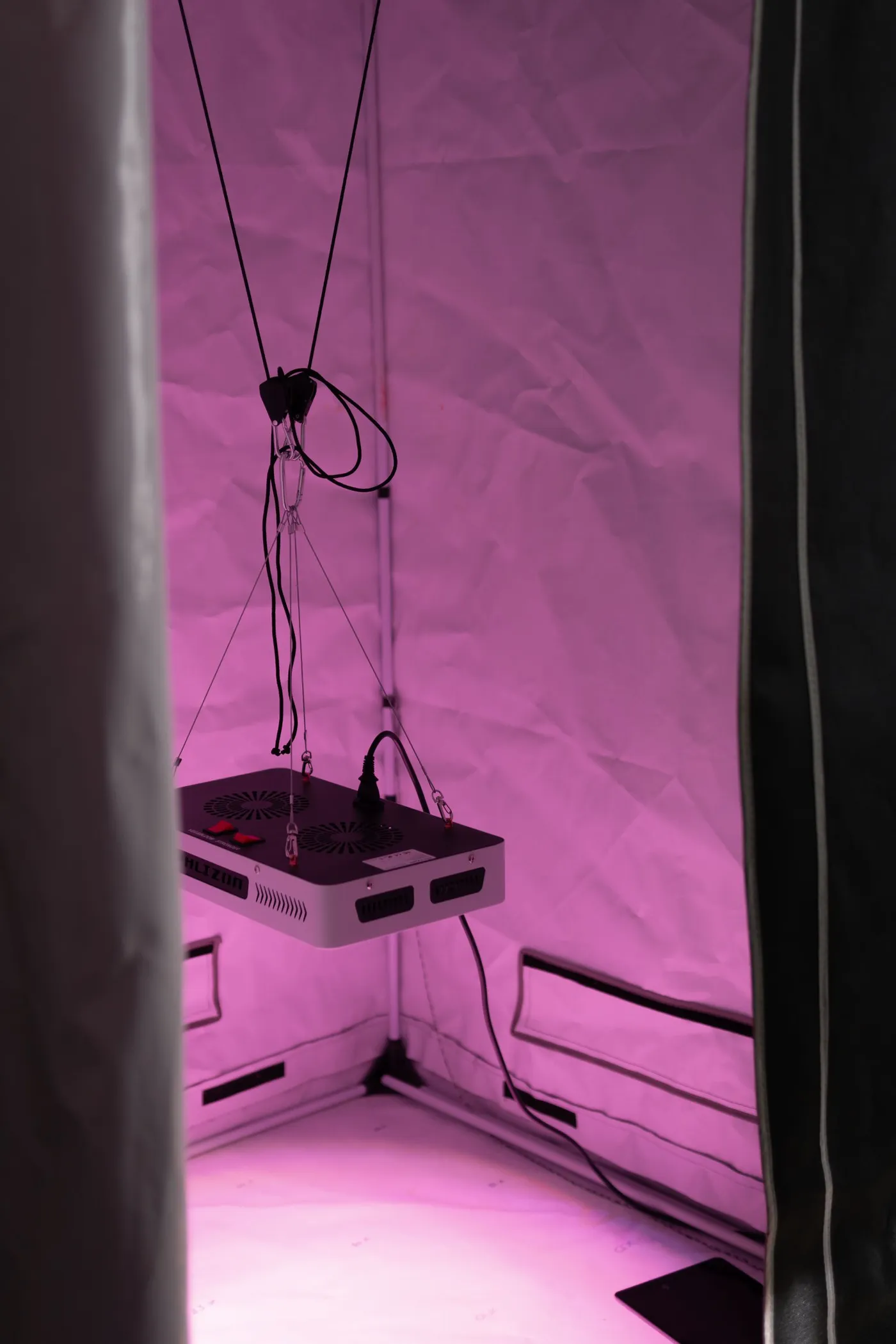
1000 Ways Not To Measure
As Thomas Edison has famously been quoted while inventing the light bulb to "not have failed 10'000 times but found 10'000 ways not to do it" — so did we in developing our measurement algorithm. Apart from the actual image and what happens in front of the camera, there are about 15 factors that influence how we measure the light entering the camera. This results in a massive amount of possible solutions which we needed to narrow down with painstaking logical analysis, research and a lot of trial and error.

We've spent weeks measuring as many different light sources, different iPhones, and different scenarios as we could. This approach not only delivered us the data we needed, it also showed us where we were already good at and where we needed to improve.
One of the major learnings, or evidence of what we already suspected, was the enormous variance in the captured scenery and how the camera exposes images. One important thing to know is that the iPhone's camera is of course tuned to make images as pleasing to the eye as possible, which is not exactly what we need for our purpose.
We experimented a lot with different sceneries and camera settings until we reached a conclusion: In order to maximize accuracy, we need a diffuser in front of the camera.
The Breakthrough
Maximizing accuracy required one major change in our user experience: The usage of a simple printer paper diffuser in front of the camera. We've known the benefits – in some cases even the necessity – of a diffuser in front of any light capturing device to build a proper light meter. However, we were hesitant in the past as we wanted to offer an accurate measurement without any additional equipment.

We've experimented a lot with different diffusers built from different types of paper and took thousands of reference measurements. Those measurements then allowed us to completely rebuild our measurement algorithm to measure as accurately as possible in both scenarios; with and without a diffuser. The result is a good measurement without any diffuser in most cases and a very good measurement with a diffuser in all cases.
The Final Sprint
We've completely rebuilt our measurement from the ground up — beginning at how the camera is capturing the individual pixels. By taking a fresh perspective of the whole signal chain, we were able to not only improve the measurement for one single phone, but also to make it less dependent on the individual phone type.
We tackled our development in different phases: First figuring out the best way for one phone, in one scenario, and with one light source. Not until we mastered this first challenge, we moved on to other phone models, other types of diffusers, other light sources, wider light intensity ranges, and more. The final sprint focused heavily on making our core technology actually suitable and robust for the public.
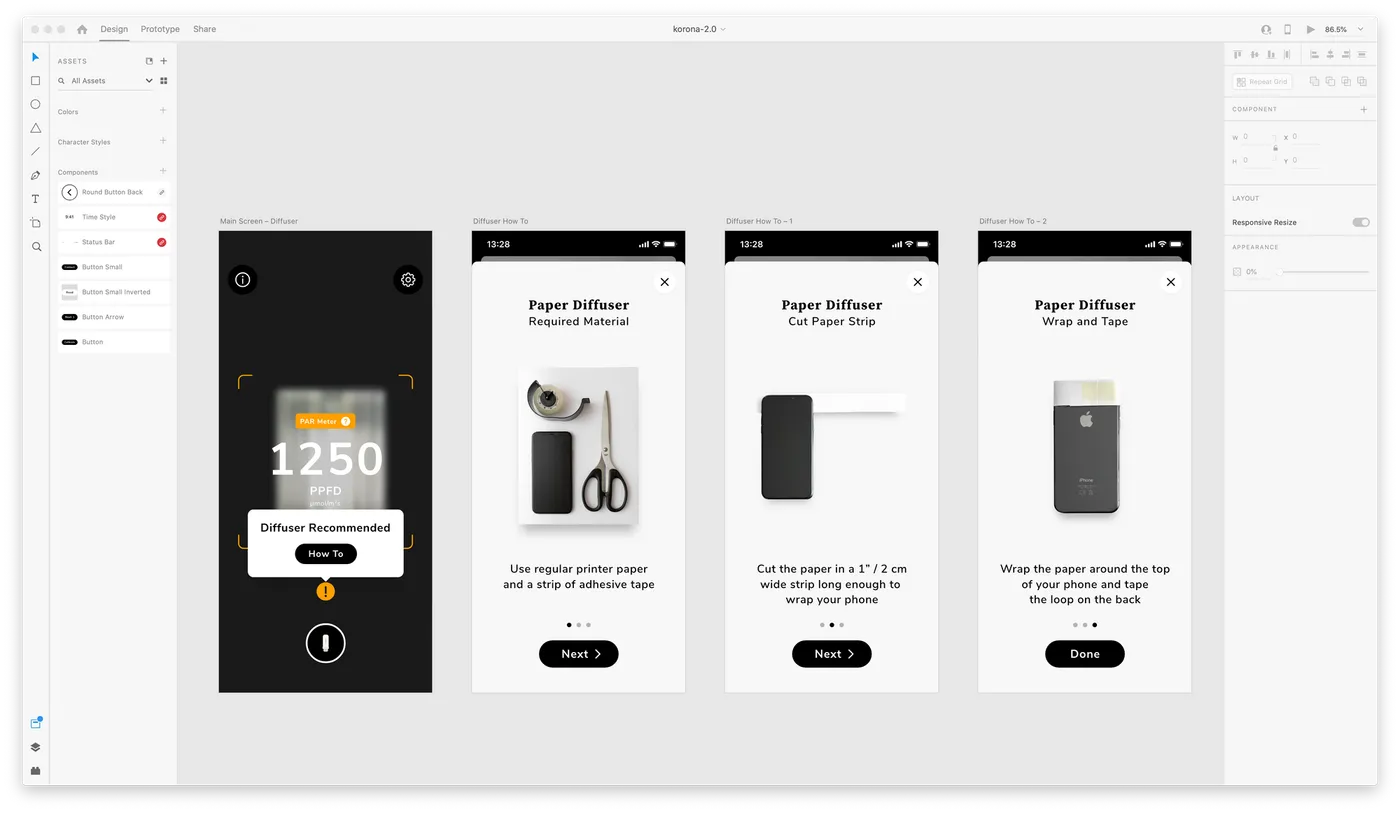
Additionally, we needed to incorporate the diffuser and how to build one in our user interface. A frictionless user experience is important to us as we want to enable everyone to use the best light meter app without frustration. We tried — and hopefully succeeded — to make it as clear and simple as possible when to use a diffuser and the steps required to build one.
After this, the whole knowledge needed to be put into actual code, tested, fine-tuned and finally: Released.
Afterthought
Korona 2.0 marks a very important milestone for us and we highly recommend to give it a try if you haven't yet.
We finish a very intensive and fulfilling time of research and development on our core technology and gained the space to focus on other areas of our app as well. So stay tuned!
Maximizing Accuracy and Sample Measurements
Korona is a light measurement app. Obviously, reliable accuracy is key. We have therefore written a white paper on how to achieve the highest accuracy including many sample measurements using different lights, phones, and ranges.
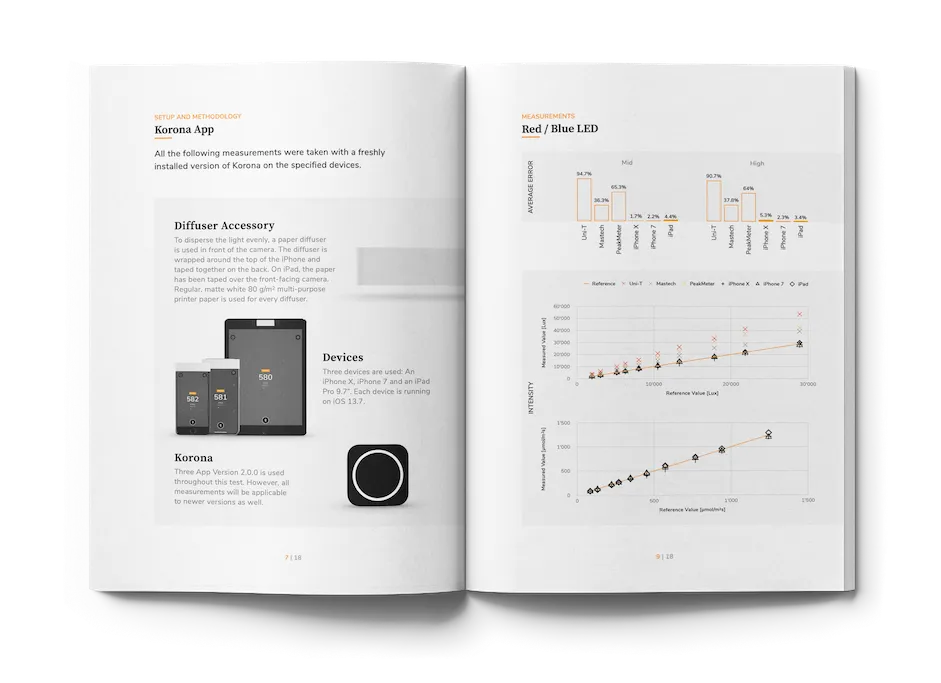
We highly recommend to read the white paper for further information.

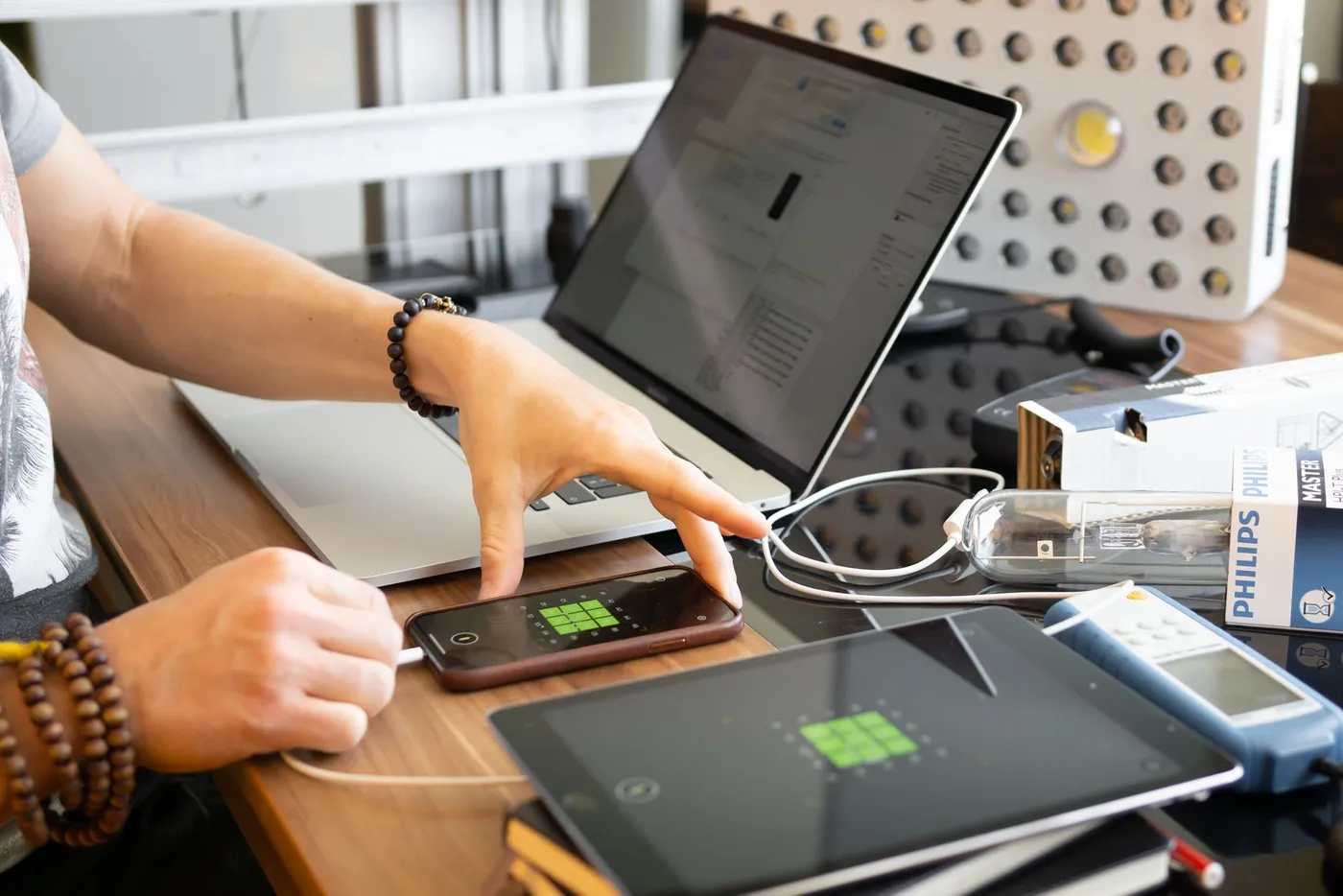
 Share This
Share This




